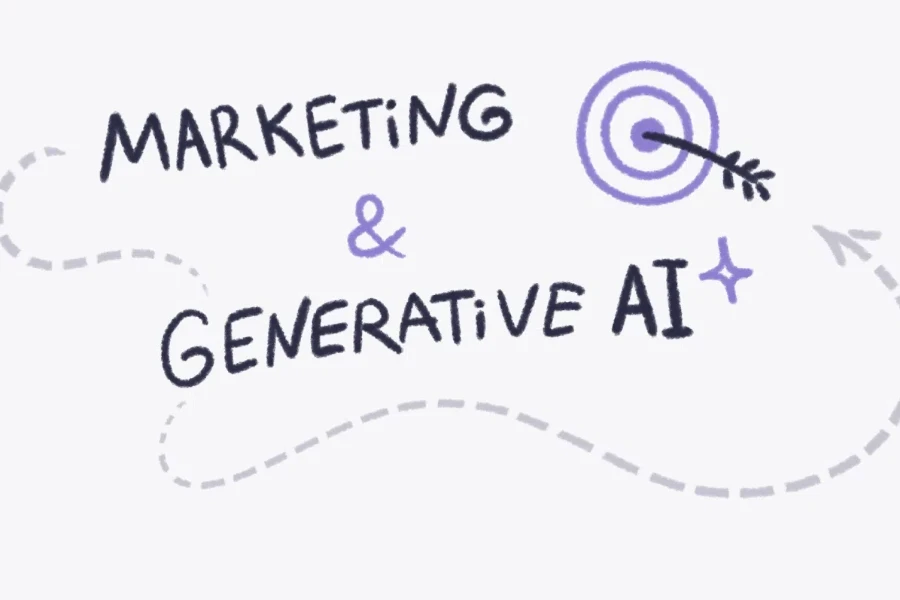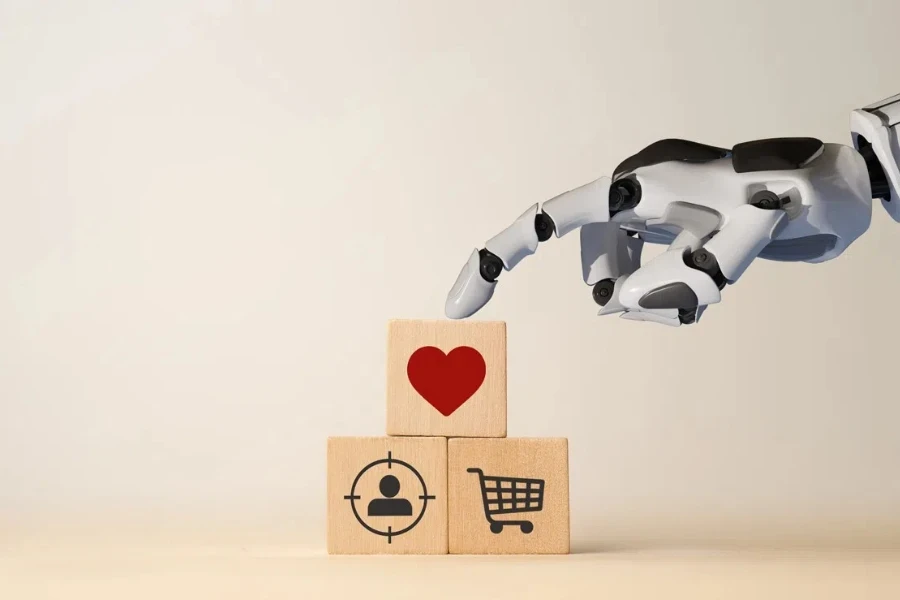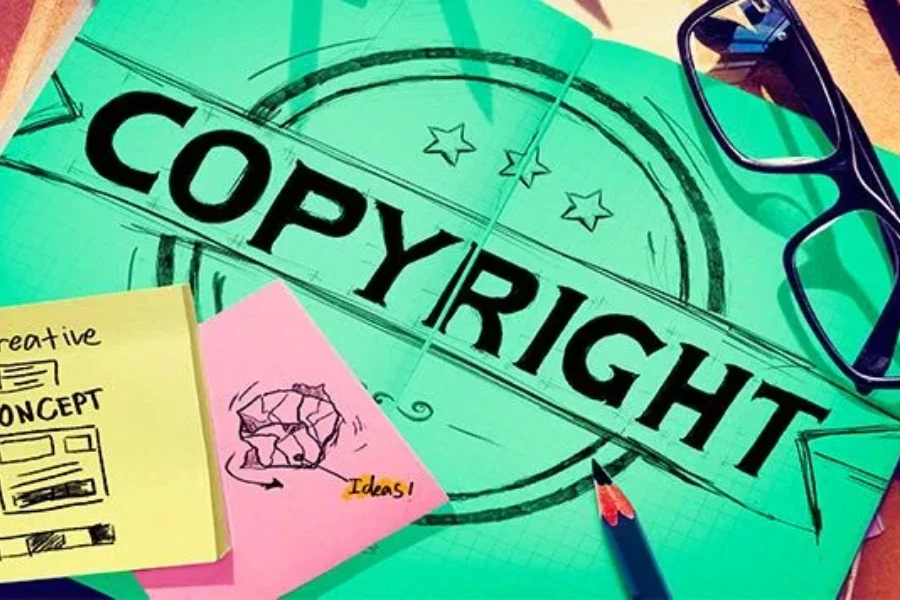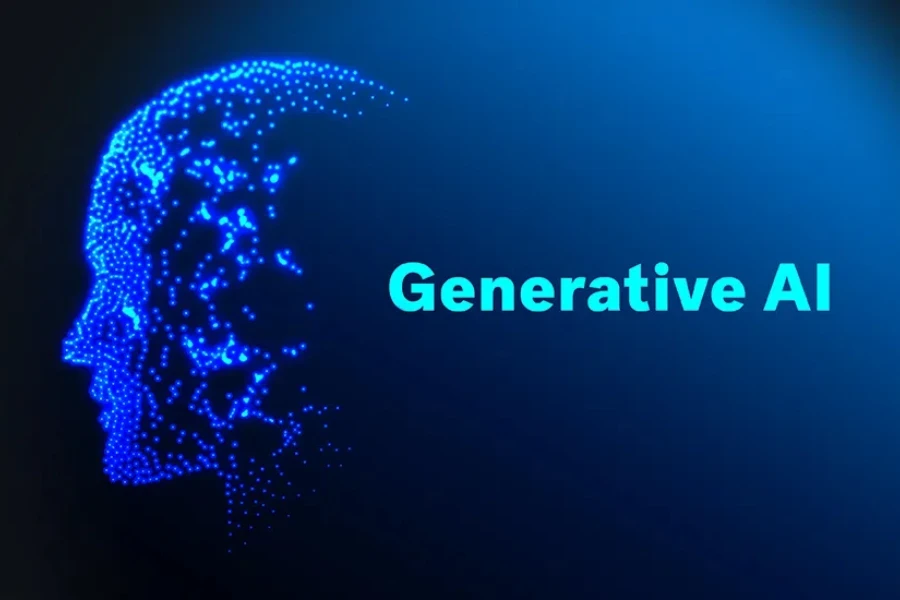A recent McKinsey survey found that only 10% to 14% of companies regularly use generative AI in their marketing and sales efforts. This low adoption rate is surprising, given how beneficial generative AI can be for marketing.
So, why aren’t more companies jumping on this technology, and how can marketers move past the idea that “AI = bad” to leverage its full potential? Here, we’ll demonstrate the myriad benefits of what generative AI can do for marketers, as well as the risks and strategies to help mitigate these potential downsides.
Table of Contents
What is generative AI, and how has it impacted marketing
How generative AI can help businesses in their marketing
The risks of using generative AI for marketing with solutions
Strategies to use when adopting generative AI for consumer marketing
Summary
What is generative AI, and how has it impacted marketing

Generative AI is a type of machine learning, a field within artificial intelligence. Unlike earlier AI, which mainly analyzed data, generative AI creates various content, including written, visual, audio, and video. It can also answer questions, interpret data, write code, and solve complex problems.
Although generative AI isn’t new, recent advancements have made some models much easier to use despite their complexity. These models use “deep learning,” a technique inspired by how the human brain forms associations, to mimic human speech, writing, drawing, planning, and strategizing. Top generative AI tools for marketers include Open AI’s ChatGPT (and DALL-E), Google’s Gemini (formerly Bard), Stable Diffusion, Progen, and GAN.ai.
Generative AI is already making waves in marketing, and it’s not going anywhere. Here are some studies that show its impact on consumer marketing.
- A 2022 MIT Technology Review study revealed that only 5% of marketing organizations saw generative AI as “critical” to their operations, and just 20% were using it widely. However, by 2025, 20% of marketing executives plan to make generative AI part of their operations, and another 44% intend to use it in various applications.
- In a 2023 Salesforce survey of 1,000 marketers, more than half reported currently using generative AI, and another 22% planned to adopt it within the next year.
- According to a 2023 Statista survey of 1,000 B2B and B2C marketing professionals, 73% already use some form of generative AI.
- A 2023 Boston Consulting Group survey found that 67% of marketing executives explore generative AI for personalization, 49% for content creation, and 41% for market segmentation.
How generative AI can help businesses in their marketing

There are four marketing areas where generative AI shines the most and helps push toward greater results. Here’s what businesses need to know to get started:
Customization

Consumers want personalized experiences, and generative AI can deliver this on a large scale. Take Carvana, for example – the used car platform used generative AI to create millions of unique videos for customers, enhancing user engagement. Other brands, like Spotify, use AI for language translation to reach broader markets.
Generative AI is also improving customer service by helping agents provide more personalized interactions. Recent advances in multi-modal AI technology promise even more tailored solutions, like chatbots that can handle specific customer needs and personas.
Creativity

Generative AI can significantly enhance creativity in marketing. Studies show that AI tools like ChatGPT4 can surpass human creativity in product ideation and improve the quality and originality of written output. According to another study, generative AI also can help individuals boost their creativity, improving some written work by up to 26%.
Companies like Unilever are openly using AI to create advertising content, while campaigns like Coca-Cola’s “Masterpiece” demonstrate how AI can revolutionize creative possibilities in marketing. Coca-Cola even created an NFT collection based on the ad’s digital art and generated over $500,000 in 72 hours.
Connectivity

Generative AI enables brands to connect with customers in new ways, foster consumer interactions, and let consumers play an active role in brand narratives. Use cases include Virgin Voyages’ Jen AI campaign (which led to a 150% greater engagement rate than previous campaigns) and Coca-Cola’s “Create Real Magic” initiative.
These campaigns show how AI can democratize marketing participation by reducing technical barriers and allowing consumers to become designers and storytellers. Such initiatives enhance engagement and strengthen relationships with a broader market.
Cost of cognition

Generative AI can greatly lower the cost and time associated with various cognitive tasks in marketing and consulting. This technology has shown it can increase efficiency and quality of work, as demonstrated by a field experiment with Boston Consulting Group consultants, who completed more tasks (like brainstorming product ideas and segmenting markets) 21.5% faster and with 40% higher quality when using AI.
Ad agencies like WPP are already benefiting from significant cost savings by implementing generative AI in their processes. They reported that AI in advertising could save them 10 to 20 times in cost.
The risks of using generative AI for marketing with solutions

Generative AI offers so many opportunities that it’s easy to integrate into almost every element of marketing in its current form. However, the technology is not perfect and comes with risks that could bring more negativity than positivity to marketing. Three of these particularly pressing risks include consumer reactance, confabulation, and copyright infringement. Below, we’ll go into more detail on each:
Consumer reactance

Generative AI can cause a negative reaction in consumers, especially when it’s utilized poorly in areas involving direct interaction – like customer service chatbots, promotional content, or AI-generated products. This issue is more noticeable in fields that traditionally rely on human qualities, like communication and social interactions, where understanding the individual is important.
To address this, businesses can emphasize areas where they continue to use human staff. Or if they do use automation, be transparent about why they’ve chosen to do so. Consumers are less likely to react negatively if they understand that the purpose of using AI is to enhance their experience rather than just to save money.
Confabulation

Generative AI can produce inaccurate or biased content, which can mislead marketing decisions or damage a brand’s reputation. These issues are especially concerning when it comes to customer-facing and strategic marketing tasks. However, there are ways businesses can reduce these risks.
Fine-tuning AI with specific data or using in-context learning can improve the accuracy of AI outputs. Additionally, maintaining human oversight of AI-generated content is crucial for increased accuracy, ensuring businesses can catch errors and that content aligns with their brand values and goals.
Copyright infringement

Generative AI raises important questions about creative ownership and copyright risks, which could lead to significant legal issues for brands. However, managing these risks is easy given the correct precautions are put in place. Marketers must stay informed about the legal challenges the top AI developers face, and while copyright laws may not fully protect AI-only content, mixing it with man-made content can significantly reduce risks.
Partnering with companies that focus on addressing copyright issues is another great solution for handling legal risks. For example, Getty Images has a text-to-image tool trained on its content, offering customers royalty-free licenses and extensive usage rights. Similarly, Google and OpenAI have introduced new policies to protect users.
Strategies to use when adopting generative AI for consumer marketing

The risks of generative AI are real, but they don’t mean marketers should avoid it entirely. Saying that, they also shouldn’t take unnecessary risks by adopting it blindly. Instead, a balanced approach is best, where marketers identify specific areas to experiment with AI and other areas before considering rolling out such features or content.
According to the Harvard Business Review, the DARE framework – which stands for decompose, analyze, realize, and evaluate – is a useful four-step strategy that can help marketers effectively integrate generative AI into their business. Here’s what each step involves:
Decompose (or break down) roles
Start by breaking down marketing roles into individual tasks. For example, a content marketing specialist’s job includes tasks like content creation, SEO optimization, audience research, calendar management, performance analytics, and collaboration with the business team.
Analyze tasks
Evaluate each task by weighing potential opportunities against inherent risks. Rate each on a scale of 1 to 10 for both benefits and dangers. For instance, using generative AI for social media content creation could boost creativity and reduce workload but also carries risks like producing inaccurate information or causing negative consumer reactions.
Realize transformation priorities
Plot these tasks on a 2×2 matrix, comparing opportunity against risk. This matrix will help guide a business’ transformation strategy. Usually, this matrix will have four categories indicating if businesses should innovate with AI or not.
- High-priority tasks (high opportunity, low risk): These tasks are ideal for generative AI, offering great rewards with minimal risk. You can start experimenting with these today.
- Moderate priority tasks (high opportunity, moderate risk): These tasks offer high potential but also come with significant risks. However, they need careful management and risk mitigation before implementation.
- Low-priority tasks (low opportunity, low risk): These tasks should be considered later, as they offer limited benefits with low risk. Only engage with them if extra resources are available.
- Non-priority tasks (low opportunity, high risk): Continue with the current approach for these tasks. The benefits of using AI for them do not outweigh the risks.
See the table below for an example of how to use this matrix:
| Task | Opportunity (potential for AI to enhance) | Risk (potential negative consequences of AI) | Priority category |
| Content personalization | High (tailored content to individual preferences) | Low (minor inaccuracies, easily corrected) | High priority |
| Data analysis and insights | High (uncovering patterns, predictions) | Moderate (misinterpretation, bias in algorithms) | Moderate priority |
| Social media automation | Moderate (scheduling, basic interactions) | High (lack of authenticity, PR disasters) | Non-priority |
| Creative content generation (art) | Low (limited artistic nuance, originality) | High (copyright infringement, plagiarism) | Low priority |
Note: The matrix is only a starting point. Task priorities will likely vary depending on the industry, target audience, and resources available.
Evaluate continuously
Review and adjust your AI transformation plans and goals regularly. The AI landscape is constantly changing in terms of the innovations and solutions available. Staying ahead of the curve requires ongoing evaluation and updates to existing strategies.
Summary

Marketing teams need skills like problem-solving, exploration, experimentation, and critical evaluation to leverage generative AI effectively. These are essential for setting appropriate tasks for AI and ensuring the output meets the brand’s vision. While generative AI holds great potential, its implementation comes with various concerns.
Many managers prefer to observe rather than act, as shown by the BCG survey where most executives discourage AI use in their organizations. However, avoiding AI can be as risky as adopting it without caution. A balanced, strategic approach is necessary, avoiding extremes for full adoption or complete rejection.
For more tips on how to integrate technology and other tools into your business plan, make sure to subscribe to Alibaba.com Reads.



